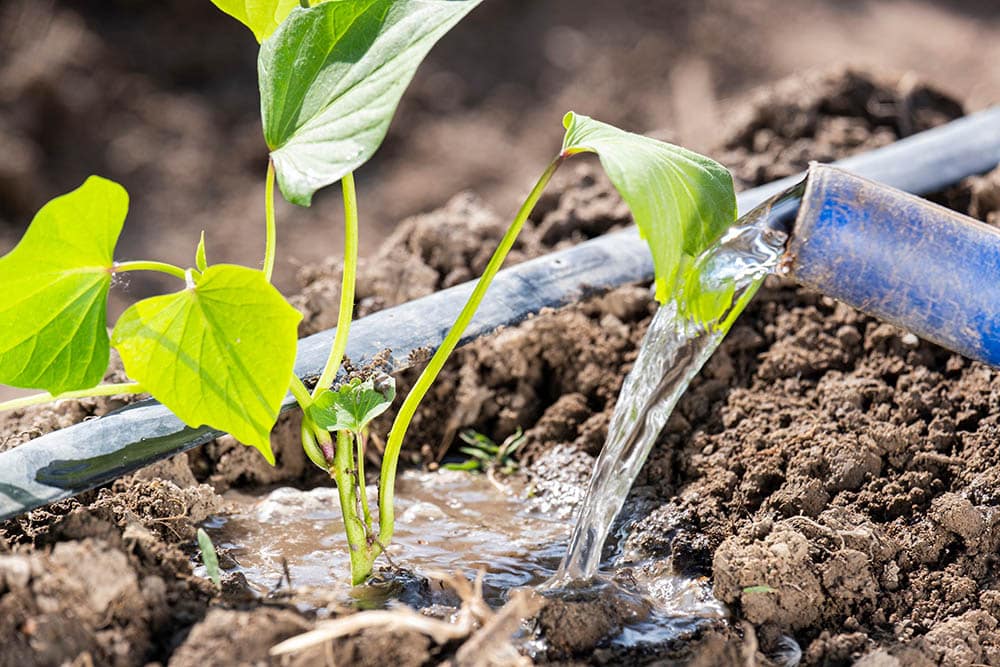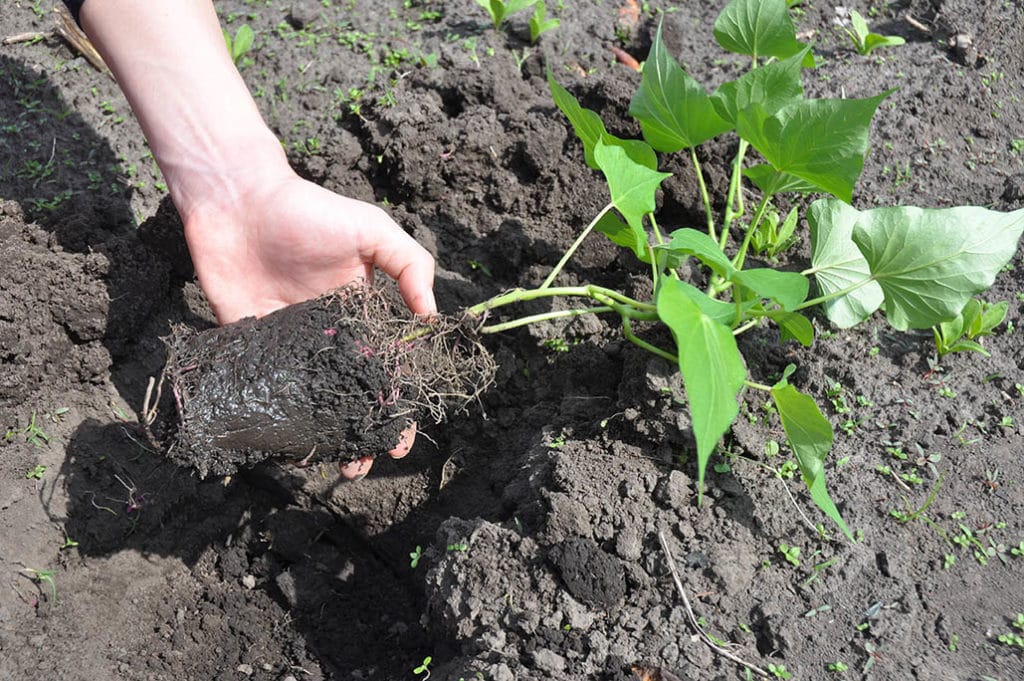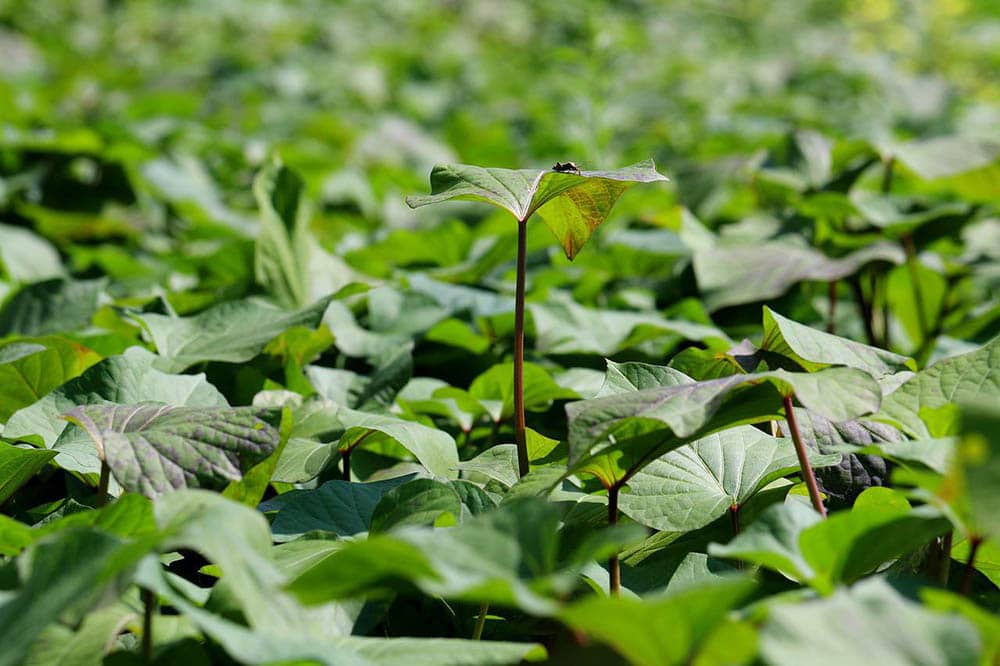How Often Should You Water Potatoes? Techniques, Facts & FAQ
-

- Last updated:

Potatoes are a perfect dinnertime staple to add to your gardening array. Unearthing these tasty treasures is one of the true pleasures of gardening, and the distinct fresh-from-the-garden flavor is far superior to any store-bought variety. However, like many of the most worthwhile garden veggies, potatoes require close care to flourish.
Your watering schedule is critical to guarantee a satisfying potato crop. Potatoes generally need 1–2 inches of water every week, but their particular needs change as the growing season progresses. Too much or too little water at the wrong time can cause potatoes to become deformed or underdeveloped.
Watering can make or break your potato crop. To help you ensure the best results when harvest time rolls around, we’ll walk you through the best watering schedule for healthy potatoes.
How Often Should You Water Potatoes?
Maintaining a steady moisture supply during the growing season will boost the quality and maximize the number of potatoes you can grow. Proper watering will even help your potatoes last longer in storage.

Watering Young Plants
Potato plants need 1–2 inches of water per week from rainfall, irrigation, or a combination of the two. Young plants don’t have an extreme need for water, typically only needing it every 4–5 days.
Water the seed potatoes deeply after planting. You can often go up to two weeks until you need to water them again if the soil doesn’t dry out. By that point, you will see new leaf development above the soil.
Watering Flowering Potato Plants
Tubers begin forming around the time the potato plant produces flowers, usually about 8 weeks after planting. At this stage, water is critical in maintaining steady tuber production. Increase the watering schedule to once every 1–2 days to encourage more robust and uniform potatoes.
Blooming potato plants may even be ready for harvest if you can’t wait. The potatoes will be smaller, but they’ll be perfectly fine to eat. Resist pulling up the tubers until the flowers have reached full bloom and begun to regress.
The soil should be moist 8–10 inches below the surface. The top layer can become a little dry, but you may need to water your potatoes more frequently in hot, arid climates. Doing so can also lower the soil temperature, which will help the cool-season crop.
Consistent moisture levels are essential. Too much water can cause potatoes to develop rot and disease, while too little can make them crack, become misshapen, and fail to develop.

The Best Watering Technique for Potatoes
Water your potatoes early in the day to let the water settle before the sun has a chance to evaporate it. A drip irrigation system works best for potatoes, as overhead watering can harm young plants and distribute the water poorly. Consider adding a 3-inch mulch layer around plants for better water retention.
Check Moisture Levels
Check your potato plant daily to see that the soil is moist at least 8 inches below the surface. Gain an understanding of your soil’s moisture needs to adjust your watering schedule as needed. A moisture meter is a handy tool for ensuring your potatoes have even amounts o water where they need it, and over time you will develop a feel for the moisture level with your hand.
Consider the type of soil when setting your water schedule. While loamy soils may need the standard watering schedule, poorly drained soils like clay may require less water.

When Should You Stop Watering Potatoes?
Stop watering the potato when the stems start wilting and foliage begins turning yellow and dying, usually about 12 weeks after planting. You should be ready to harvest your potatoes within 2–3 weeks.
At this stage, less water helps the potatoes toughen up before harvest. They can dry out and become easier to pull out, allowing them to preserve their protective skin. Potatoes stay fresh much longer when they don’t have damage.
You can cover your potatoes with a breathable tarp to let in light and prevent moisture buildup. Natural rainfall won’t ruin a crop, but you should wait until the soil is dry before you harvest your potatoes. Pulling dry potatoes prevents moisture from being stored with them, which may promote mold and rot. After harvesting, move them to a cool, dry place for storage.
Final Thoughts
Proper watering techniques will make your potatoes far more satisfying, but there’s little room to make assumptions. It takes detailed knowledge to nourish healthy, hearty potatoes up to harvest time and prepare them for storage. The wrong amount of water at the wrong time can make them undersized, misshapen, and easily damaged. By following this guide on how often you should water your potatoes, you can avoid waste and guarantee a fulfilling crop every time.
Featured Image Credit: PromKaz, Shutterstock
Contents

